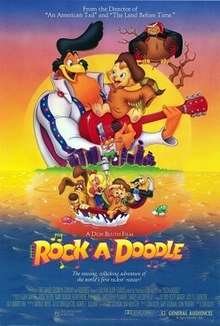Modern animation in the United States from the late 1980s to the early 2000s is frequently referred to as the renaissance age of American animation. During this period, many large American entertainment companies reformed and reinvigorated their animation departments, following the dark age, and the United States had an overall profound effect on animation globally.
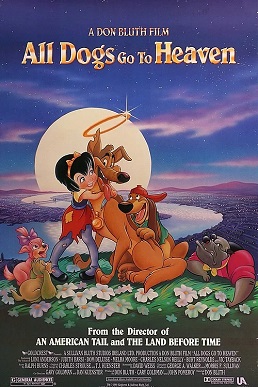
All Dogs Go to Heaven is a 1989 animated musical fantasy comedy-drama film directed by Don Bluth and co-directed by Gary Goldman and Dan Kuenster. Set in New Orleans in 1939, it tells the story of Charlie B. Barkin, a German Shepherd that is murdered by his former friend, Carface Carruthers. Charlie escapes from Heaven to return to Earth where his best friend, Itchy Itchiford, still lives, in order to take revenge on Carface. Instead, he ends up befriending a young orphan girl named Anne-Marie. In the process, Charlie learns an important lesson about kindness, friendship and love.
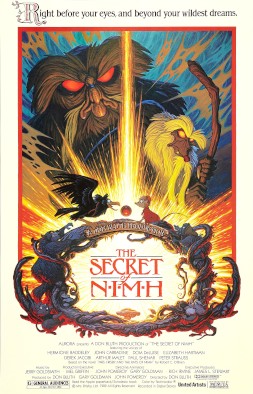
The Secret of NIMH is a 1982 American animated fantasy adventure film directed by Don Bluth in his directorial debut and based on Robert C. O'Brien's 1971 children's novel, Mrs. Frisby and the Rats of NIMH. The film features the voice of Elizabeth Hartman as the protagonist Mrs. Brisby along with those of Peter Strauss, Arthur Malet, Dom DeLuise, John Carradine, Derek Jacobi, Hermione Baddeley, and Paul Shenar. It was produced by Bluth's production company Don Bluth Productions in association with Aurora Productions.

Donald Virgil Bluth is an American filmmaker, animator, and author. He is best known for directing the animated films The Secret of NIMH (1982), An American Tail (1986), The Land Before Time (1988), All Dogs Go to Heaven (1989), Anastasia (1997), and Titan A.E. (2000), for his involvement in the LaserDisc game Dragon's Lair (1983), and for competing with former employer Walt Disney Productions during the years leading up to the films that became the Disney Renaissance. He is the older brother of illustrator Toby Bluth.

An American Tail is a 1986 American animated musical adventure comedy-drama film directed by Don Bluth and written by Judy Freudberg and Tony Geiss from a story by David Kirschner, Freudberg and Geiss. The film stars the voices of Phillip Glasser, John Finnegan, Amy Green, Nehemiah Persoff, Dom DeLuise, and Christopher Plummer. It is the story of Fievel Mousekewitz and his family as they emigrate from Russia to the United States for freedom, but Fievel gets lost and must find a way to reunite with them.
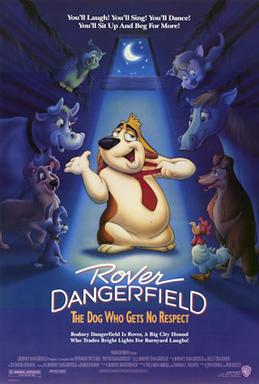
Rover Dangerfield is a 1991 American animated musical comedy film starring the voice talent of comedian Rodney Dangerfield, who also wrote the screenplay and story and co-produced the film. It revolves around the eponymous character, a canine facsimile of Dangerfield owned by a Las Vegas showgirl, who gets dumped off the Hoover Dam and finds himself living on a farm. Critical reception was unfavorable, although its animation received minor praise.

The Land Before Time is a 1988 animated adventure film directed and produced by Don Bluth from a screenplay by Stu Krieger and a story by Judy Freudberg and Tony Geiss; it is executive produced by Steven Spielberg, George Lucas, Kathleen Kennedy, and Frank Marshall. The film stars the voices of Gabriel Damon, Candace Hutson, Judith Barsi, and Will Ryan with narration provided by Pat Hingle. It is the first film in The Land Before Time franchise.

The Fox and the Hound is a 1981 American animated buddy drama film produced by Walt Disney Productions and loosely based on the 1967 novel of the same name by Daniel P. Mannix. It tells the story of the unlikely friendship between a red fox named Tod and a hound named Copper, as they struggle against their emerging instincts and the realization that they are meant to be adversaries.
Michel Gagné is a Canadian cartoonist.

Banjo the Woodpile Cat is a 1979 American animated short film directed by Don Bluth. It follows the story of Banjo, an overly curious and rebellious kitten who, after getting into trouble for falling from a house to see if he could land on his feet, runs away from his woodpile home in his owners' farm in Payson, Utah by catching a truck to Salt Lake City. Produced on a shoestring budget, and created in Bluth's garage, the film took four years to make and it was the first production of Don Bluth Productions, later Sullivan Bluth Studios. It premiered theatrically on November 16, 1979, and at the USA Film Festival one year later on March 28, 1980. It was released on DVD by 20th Century Fox Home Entertainment on May 20, 2014.
Don Bluth Entertainment was an Irish-American animation studio established in 1979 by animator Don Bluth. Bluth and several colleagues, all of whom were former Disney animators, left Disney on September 13, 1979, to form Don Bluth Productions, later known as the Bluth Group. This studio produced the short film Banjo the Woodpile Cat, the feature film The Secret of NIMH, a brief animation sequence in the musical Xanadu, and the video games Dragon's Lair and Space Ace. Bluth then co-founded Sullivan Bluth Studios with American businessman Gary Goldman, John Pomeroy and Morris Sullivan in 1985.
Chanticleer and the Fox is a fable that dates from the Middle Ages. Though it can be compared to Aesop's fable of The Fox and the Crow, it is of more recent origin. The story became well known in Europe because of its connection with several popular literary works and was eventually recorded in collections of Aesop's Fables from the time of Heinrich Steinhowel and William Caxton onwards. It is numbered 562 in the Perry Index.
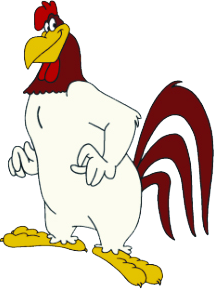
Foghorn Leghorn is an anthropomorphic rooster who appears in Looney Tunes and Merrie Melodies cartoons and films from Warner Bros. Animation. He was created by Robert McKimson, and starred in 29 cartoons from 1946 to 1964 in the golden age of American animation. All 29 of these cartoons were directed by McKimson.
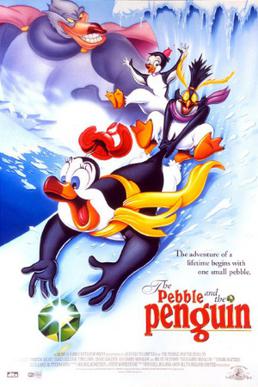
The Pebble and the Penguin is a 1995 American independent animated musical comedy-adventure film directed by Don Bluth and Gary Goldman. The film stars the voices of Martin Short, Jim Belushi, Tim Curry, and Annie Golden. Based on the true life mating rituals of the Adélie penguins in Antarctica, the film focuses on a timid, stuttering penguin named Hubie who tries to impress a beautiful penguin named Marina by giving her a pebble that fell from the sky and keep her from the clutches of an evil penguin named Drake who wants Marina for himself.
Dan Kuenster is an American character animator and director, who worked for Walt Disney Animation Studios, BrainPower Studio and Sullivan Bluth Studios, before pursuing educational multimedia projects. He is also formerly Executive Vice President of Design and Animation at Istation in Dallas, Texas.

Chantecler is a verse play in four acts written by Edmond Rostand. The play is notable in that all the characters are farmyard animals including the main protagonist, a chanticleer, or rooster. The play centers on the theme of idealism and spiritual sincerity, as contrasted with cynicism and artificiality. Much of the play satirizes modernist artistic doctrines from Rostand's romanticist perspective.
Rub-A-Dub-Dub was a British television series animated by Peter Lang and Alan Rogers of the Cut-Out Animation Co. They were previously famous for Pigeon Street. The series was produced by David Yates and Joe Wolf. The title is a reference to the nursery rhyme Rub-a-dub-dub. Rub-A-Dub-Dub was animated in a similar way, yet all the characters were anthropomorphic animals. It ran in 1984, completing 25 episodes.
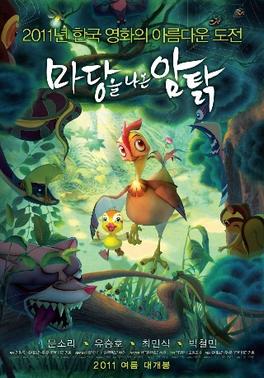
Leafie, A Hen into the Wild, also called Daisy, A Hen into the Wild in English-speaking countries, is a 2011 South Korean animated drama film which depicts the freedom, will and instinctive motherly love of a hen as she raises an adopted duckling. The film made box office history by drawing over 2.2 million viewers, the largest audience for a home-grown animated film in South Korea. It also received widespread critical acclaim upon release.
Jesper Moller is a Danish animator, screenwriter and movie-director.
Gregory Tiernan is an Irish-born, Canadian-based animator, director and voice artist. Along with his wife Nicole Stinn, he founded Nitrogen Studios Canada, Inc. in 2003, through which he introduced CGI to the Thomas & Friends series. Prior to this, Tiernan collaborated on various projects with filmmaker Don Bluth, Walt Disney Animation Studios and Klasky Csupo, Inc. Nitrogen Studios was purchased by Cinesite and he now works for them.
